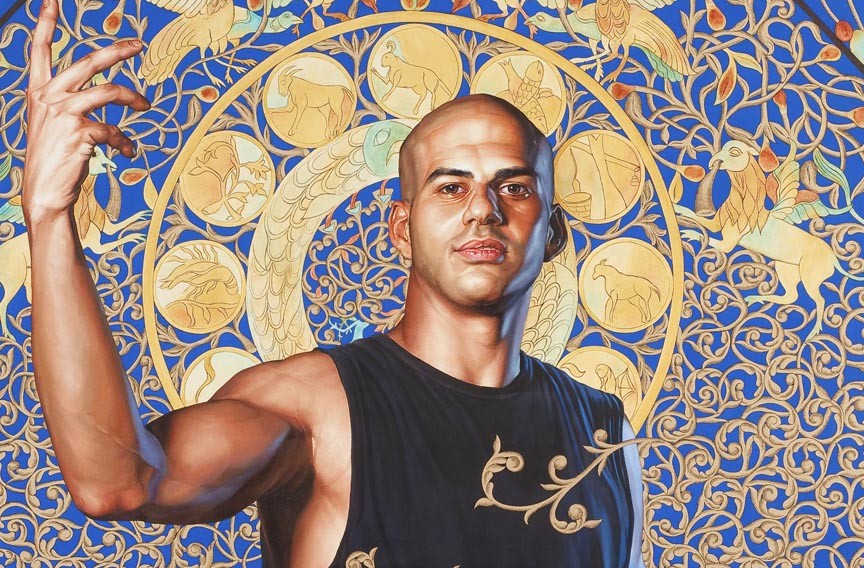
Kehinde Wiley Fishermen Upon a Lee-shore, in Squally Weather (Zakary Antoine), 2017 (above) Courtesy Kehinde Wiley and STEPHEN FRIEDMAN GALLERY, London
Barack Obama’s choice, last month, to appoint Kehinde Wiley to paint his portrait to be displayed at Washington’s National Portrait Gallery could hardly be more timely. As in Michelle Obama’s selection of Amy Sherald as her artist, Barack’s choice is current, progressive and as of last week, political.

Emma Amos Eva the Babysitter, 1973 (above) Courtesy Emma Amos, The Amos Family and RYAN LEE GALLERY (Tate Modern)
Barkley L. Hendricks Icon for My Man Superman (Superman never saved any black people — Bobby Seale), 1969. Courtesy JACK SHAINMAN GALLERY
![]()
Kehinde Wiley is no Wadsworth Jarrell, Emma Amos (top), or Barkley L. Hendricks (above) whose Civil Rights Movement inspired artwork, mostly from the late 1960s and 1970s, was exhibited recently at London’s Tate Modern’s Soul of a Nation Art in the Age of Black Power. Yet Wiley is influenced by these predecessors and his work remains relevant in a similar way. Less militant and of a different time, Wiley’s art not only addresses local issues, it also tackles global tensions relating to predomnantly male identity and acceptance, across China, Brazil, India & Sri Lanka, Lagos & Dakar, and more recently, Israel. This was seen in Kehinde Wiley/The World Stage: Israel in New York’s Jewish Museum in 2012.

Kehinde Wiley Abed Al Ashe and Chaled El Awari (The World Stage: Israel), 2011(© Kehinde Wiley; Courtesy Roberts & Tilton, CA) (above)

Detail from Kehinde Wiley Kalkidan Mashasha (The World Stage: Israel), 2011 (All images courtesy the Jewish Museum.) (above)
Wiley’s portraits, often focusing on the male skin and body as art, are softened by textiles, pattern and a certain vulnerability. Wiley is best known for substituting the elite and often religious subjects of traditional old master paintings with contemporary African-Americans, emphasizing their absence in these historic paintings. By challenging accepted historic norms, Wiley comments on “the signifiers of power, the implications of the traditional portrait, which are about privilege, power, elitism…..that he was not included in.” (New York Times)

Kehinde Wiley Leviathan Zodiac, 2011. Courtesy of Roberts & Tilton, California. © Kehinde Wiley.
His work has a contemplative and reflective quality with his current solo show at the Stephen Friedman Gallery in London (see London’s Evening Standard) depicting everyday real Haitians (with their names in the titles) painted in heroic, maritime poses, as in Fishermen Upon a Lee-shore, in Squally Weather (Zakary Antoine), 2017 (image at top). Lacking the technical complexity of his earlier works, these portraits of migrants or seafarers, fisherman or villagers, have acquired heightened political status, due to the Department of Homeland Security’s termination, last week, of the Temporary Protected Status (TPS) granted by Barack Obama, to Haitians in the US.
With irony as the main ingredient of Wiley’s art, the timing of the exhibition of his Haitian portraits is not to be underestimated. Due to the secrecy shrouding Barack Obama’s anticipated portrait, it will be interesting to see to what extent Kehinde Wiley will reflect this relevant humanitarian TPS issue.
